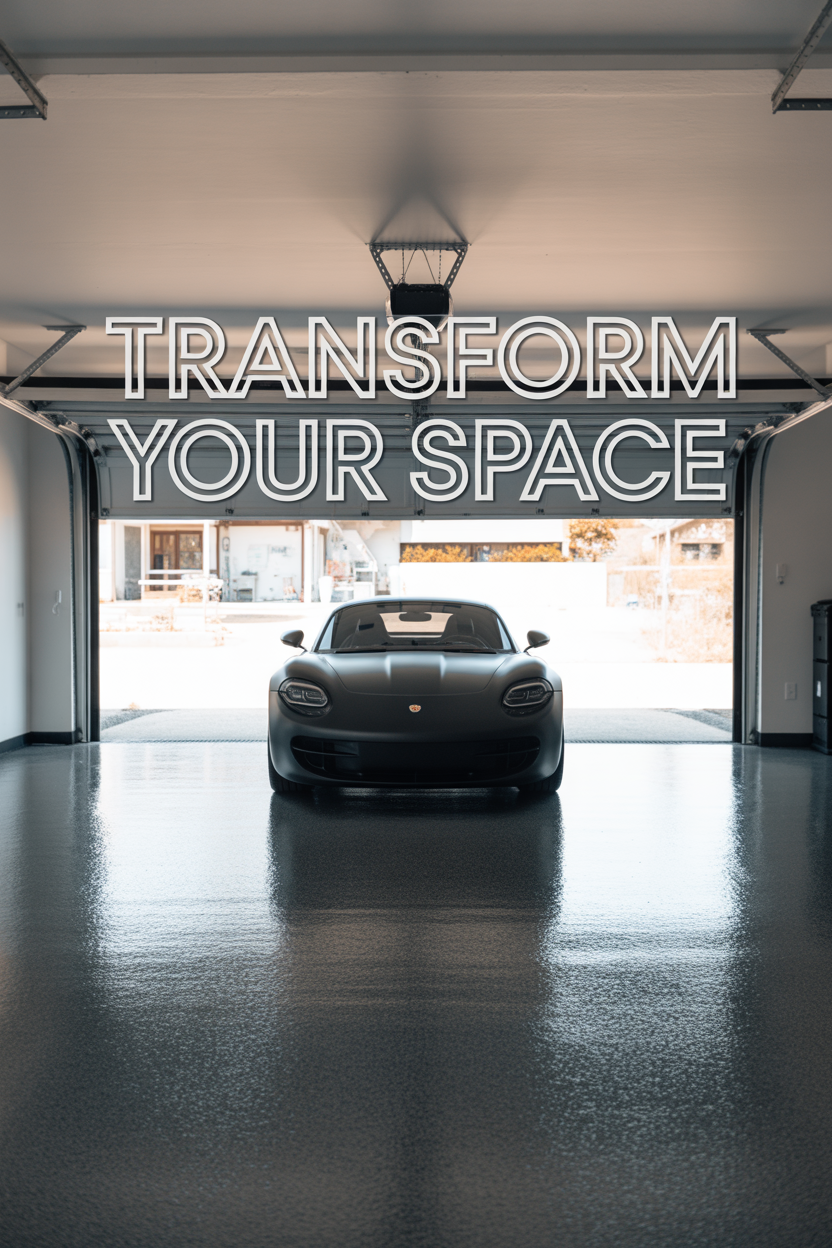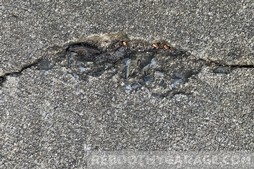Should I Paint My Garage Floor?
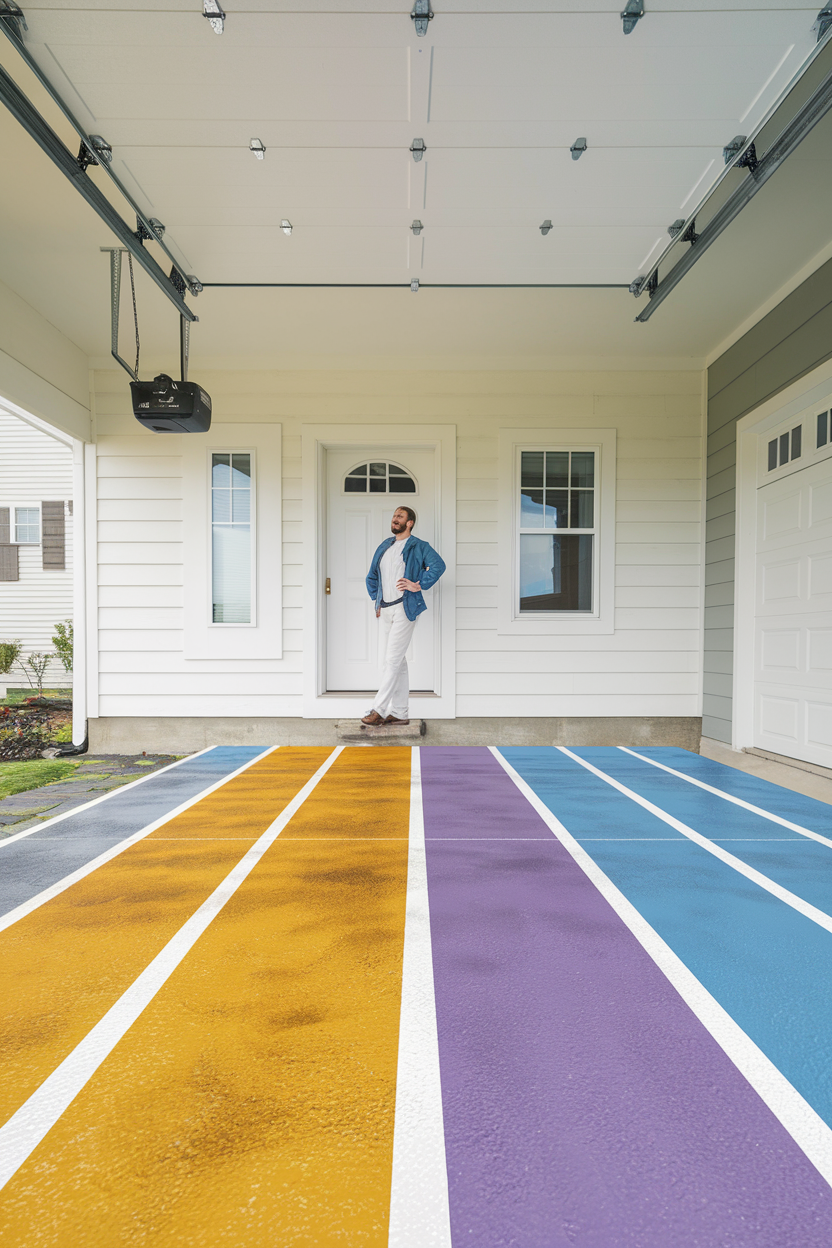
Each winter, our cars drag salt and snow into the garage, attacking the concrete. In the summer, we spill the occasional motor oil or gasoline. The question isn’t just about looks; it’s about protecting your investment.
So, what are your garage floor paint options? The answer depends on your needs and budget.
For the most basic and cheapest protection, you can use latex paint. For a beautiful coating that offers real, lasting defense, choose epoxy or polyurethane. If you need the ultimate shield against harsh chemicals like brake fluid and battery acid, polyurethane is your best bet.
Painting your floor is a key step in turning your garage from a simple parking spot into a clean, functional, and valuable part of your home. A painted floor not only looks great but can save you a ton of cleaning time.
A good concrete paint protects the concrete from damage and seals away the pervasive dust that coats everything. It also reflects light, making the entire space brighter and more inviting. It’s a valuable upgrade for any garage.
How Paint Can Brighten Your Entire Garage

A fresh coat of paint brightens your garage in more ways than one. It’s a visual upgrade that has practical benefits for your entire space.
Bare concrete absorbs light, making your garage feel darker and smaller than it really is. This forces you to rely on more artificial lighting to see what you’re doing.
A quality garage floor paint, on the other hand, reflects light. This gives you more illumination throughout the space from your existing fixtures, making it a safer and more pleasant place to be.
Plus, paint frees you from the default “concrete grey” color scheme. Many concrete floor paints are customizable with a wide range of colors and decorative flakes. You can finally match your floor to your tools, your car, or your personal style.
How Paint Protects Your Floor from Stains and Spills
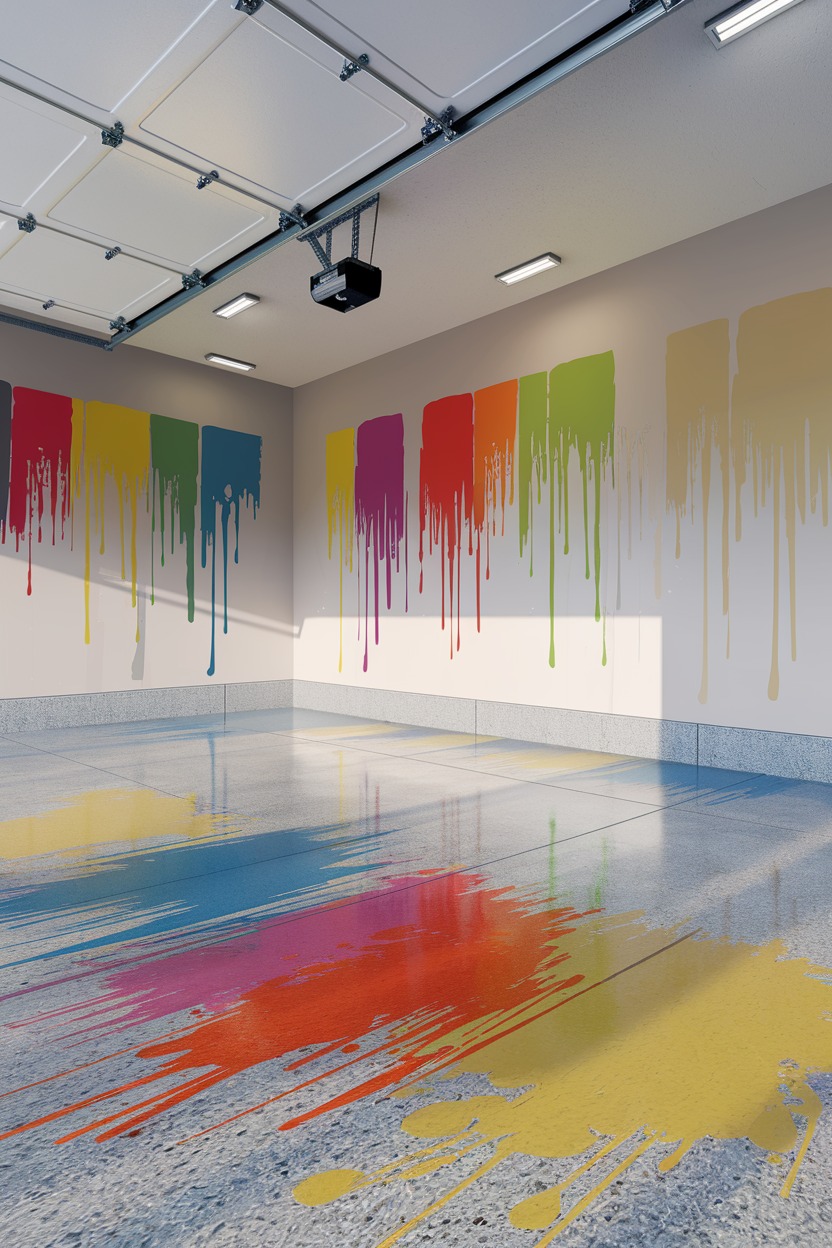
Garage floor paint designed for concrete provides excellent protection from oil spills and chemical stains. Untreated concrete may look tough, but its porous nature means it soaks up messes like a sponge.
A good coating acts as a non-porous barrier, making cleanup simple. It protects against common automotive fluids like motor oil, transmission fluid, coolant, and gasoline.
It also stands up to harsh chemicals often stored in the garage. This includes solvents, degreasers, pesticides, and road salt de-icers that get tracked in during winter.
Even household products like bleach and laundry detergent won’t be a threat to a properly painted floor. Spills that would normally leave a permanent mark can be wiped away with ease.
The right paint also protects the floor from rust stains left by tools or metal shavings. It even makes it easier to clean up organic stains from mud, leaves, or pet accidents.
Protect Your Floor from Daily Wear and Tear
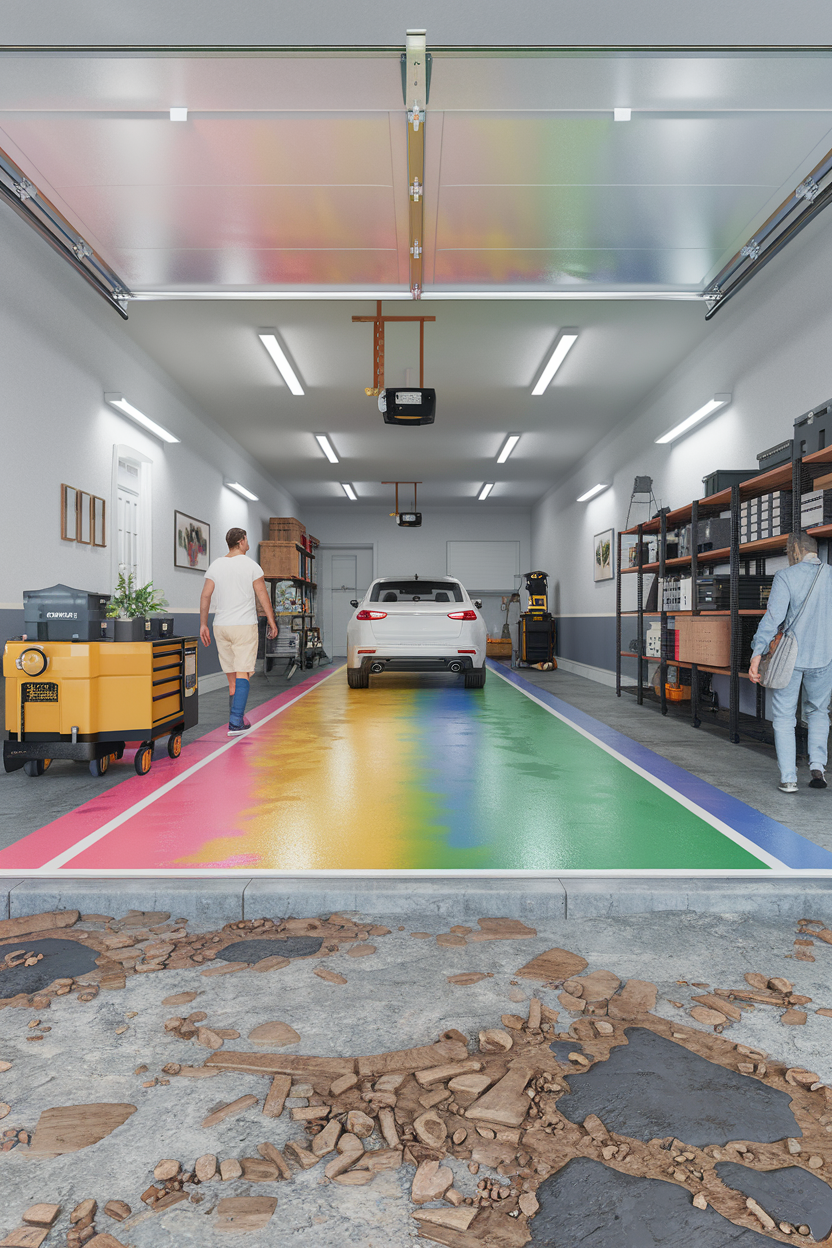
A quality garage floor paint creates a durable, protective barrier between the concrete and the daily abuse it endures. This includes the weight of car traffic, foot traffic, and scuff marks.
Concrete paint helps defend the floor from the driving, walking, dragging, and dropping that happens on its surface. It stands up to dropped tools and heavy equipment.
If applied correctly, a good paint will resist chipping, cracking, and peeling despite the physical assaults it receives. This barrier can even help protect the floor from UV damage if your garage door is often open.
Remember that proper preparation and application are absolutely critical. Achieving this level of durability is impossible if you cut corners before the first coat is even applied.
How a Painted Floor Makes Cleaning Easier

An unsealed concrete floor is a perpetual dust factory. The surface slowly breaks down over time, creating a fine powder that covers everything in the garage and gets tracked into your house.
Paint seals the concrete surface, effectively stopping this dust production at its source. This small change makes the entire space cleaner, healthier, and easier to maintain.
Beyond dust, concrete naturally has pores and imperfections where dirt, oil, and grime love to hide. This porous surface has a way of permanently bonding with stains, making them impossible to remove.
Concrete paint fills in these pores, creating a smoother, non-absorbent finish that doesn’t attract and hold onto dirt. Spills that once meant permanent blemishes become simple wipe-up jobs.
This smooth surface is also significantly easier to sweep and mop. Your broom won’t get caught on jagged edges, making your cleanup routine faster and far less frustrating.
What Are Your Paint Choices? Latex, Epoxy, or Polyurethane

You will choose amongst epoxy, latex, and polyurethane paint to protect your garage floor. Within each category, you’ll find several options to consider.
According to flooring experts, the best choice depends on your budget, durability needs, and how you use your garage. There isn’t one “best” paint, only the best paint for your specific situation.
The right way to choose is to compare how you use your garage with the pros and cons of each type. This will help you find the perfect balance of cost, performance, and ease of application.
No matter which paint you choose, remember one critical fact: you must properly prepare the floor. Poor prep is the number one cause of paint failure, turning your dream floor into a peeling nightmare.
What’s the First Step? How to Prep Your Floor for Paint

Before you even think about opening a can of paint, your concrete floor needs to be clean, repaired, and ready to bond. This prep work is the most important part of the entire project and will determine whether your new floor lasts for years or fails in months.
You must thoroughly clean, degrease, and etch the surface to ensure proper adhesion. Any existing coatings or sealers must be completely removed. The floor also needs to be perfectly dry before you begin.
Here are some helpful guides to get your floor ready for its new finish.
Cleaning Guides
- Does Kitty Litter Really Clean Oil Stains?
- Don’t Fix Your Garage Floor Before Seeing This
- What is the Absolute Best Garage Vacuum Cleaner?
Fixing Guides
The Showroom Finish: Pros and Cons of Epoxy Paint
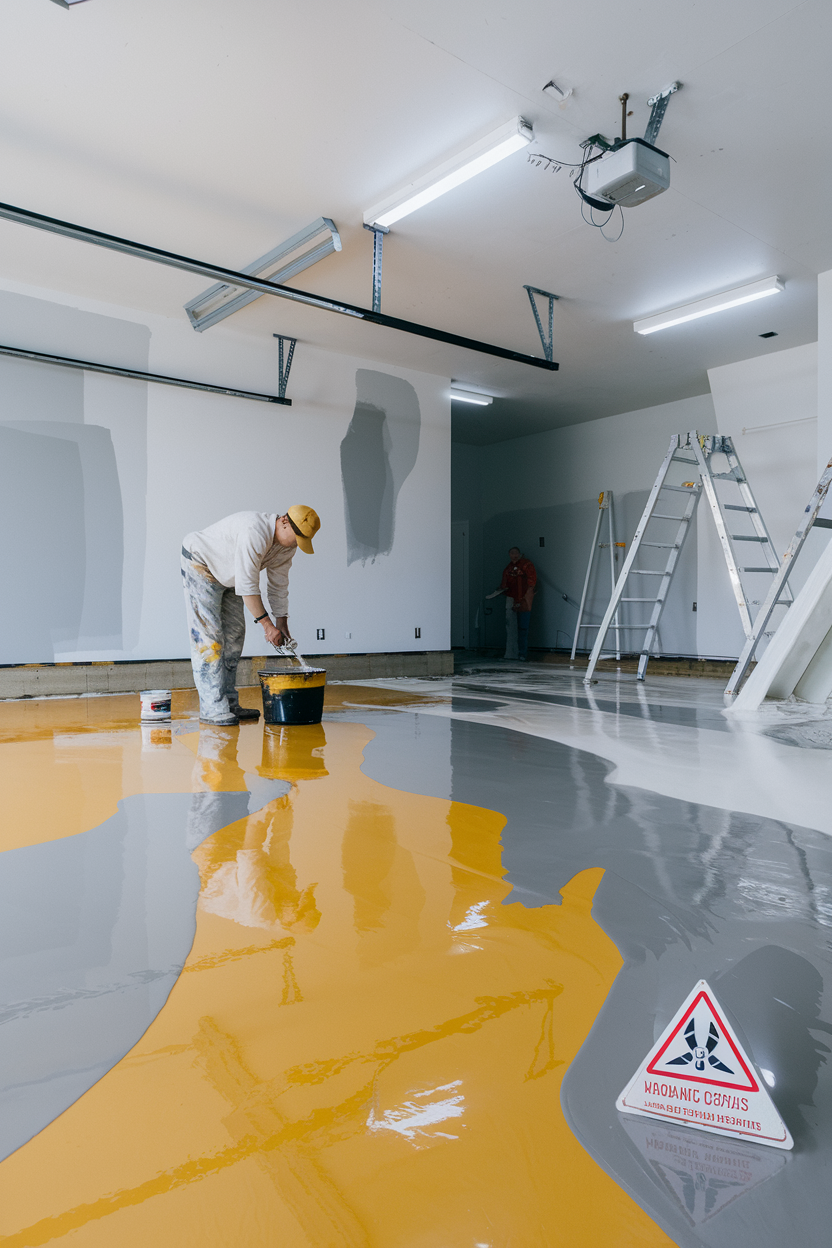
Epoxy can be beautiful, but it can also be a horrible pain in the neck if not done right. It’s important to understand the commitment before you decide on epoxy paint for your garage.
Why You Might Love Your Epoxy Garage Floor
If you apply epoxy correctly, you can expect a strong, beautiful, and long-lasting garage floor surface. Its composition is a resin and a hardener that you mix together just before application.
Epoxy paint is very durable and highly resistant to many chemicals, oils, grease, and abrasions. It creates a high-gloss finish that you can customize with color flakes, patterns, and non-slip additives for a true showroom look.
Why You Might Regret Choosing Epoxy for the Garage Floor
Preparation failures will cause endless cleanup, wasted money, and extra work. You must be meticulous when preparing a floor for an epoxy coating, or it will peel away from the floor.
Applying epoxy is difficult because you have a limited time window, known as “pot life,” to get the mixture from the bucket to the floor before it hardens. It also takes several days to dry and cure, during which you cannot walk or drive on it.
Excessive moisture in the concrete can cause the epoxy to bubble or peel. Epoxy also emits strong odors and volatile organic compounds (VOCs), requiring proper ventilation and protective gear.
Finally, a glossy epoxy finish can be slippery when wet. It’s essential to add a non-slip additive to prevent accidents.
The Budget-Friendly Option: Pros and Cons of Latex Paint
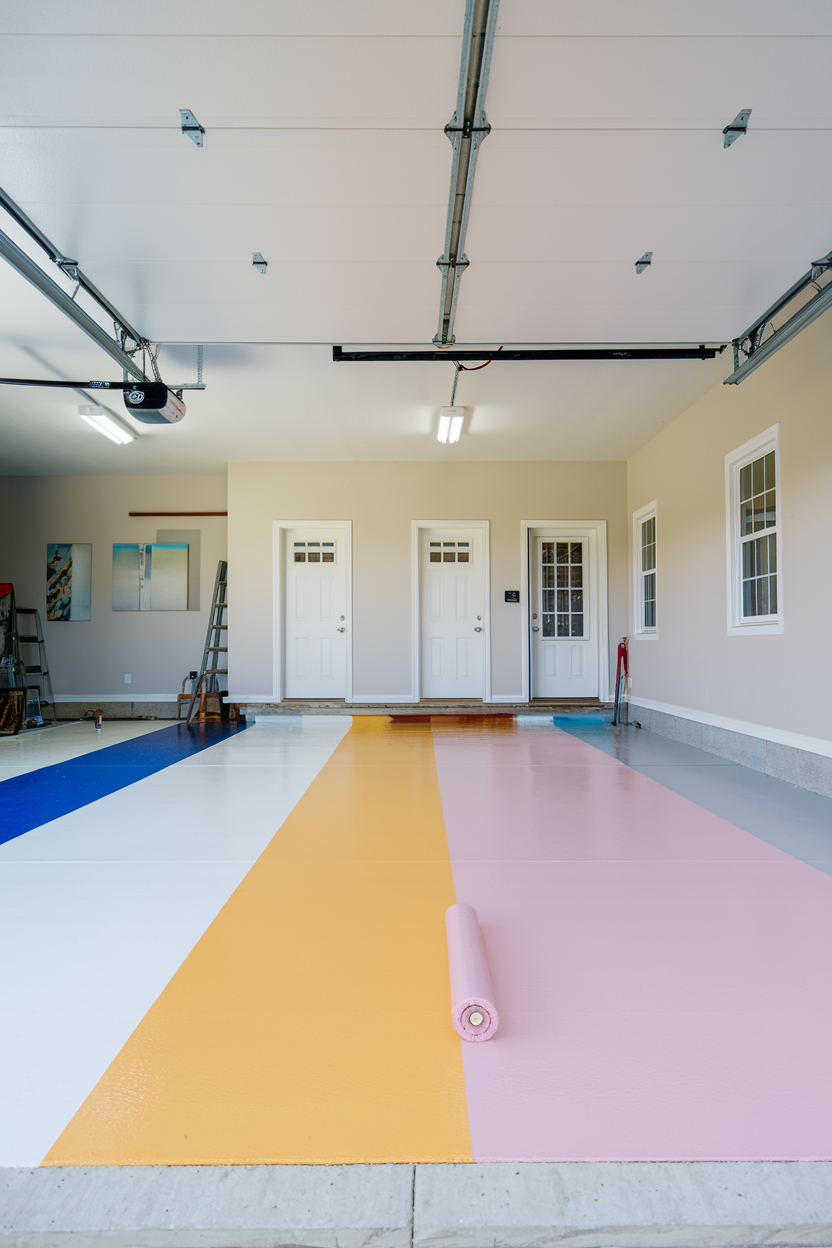
Latex paint brightens the garage and protects the floor from basic wear and tear. However, it does not hold up to stress nearly as well as epoxy and polyurethane coatings.
Why You Might Love a Latex Garage Floor
Latex paint is a water-based acrylic coating that is famously easy to work with and clean up. It’s moderately durable, making it suitable for garages with medium foot and car traffic.
Application is simple with a roller, and it dries very fast. In a dry environment, the floor can be ready for light foot traffic in just a few hours.
Latex provides a smooth finish and comes in many colors to brighten the floor. It’s the most affordable option, making it a great choice for those on a tight budget.
Why You Might Regret Using a Latex Garage Floor Paint
With latex, you’re trading lower cost and easier handling for significantly less durability. It is not as resistant to heavy traffic, abrasion from dropped tools, or chemicals like oil and automotive fluids.
Spills may cause staining, softening, or peeling of the paint over time. Latex paint is also more susceptible to water damage and does not provide the same level of moisture resistance as other coatings.
If you don’t prepare the floor properly, latex will peel or flake, often within a year. Due to its lower durability, latex paint generally requires a do-over every few years to maintain its appearance and protective qualities.
The Ultimate Protector: Pros and Cons of Polyurethane Paint
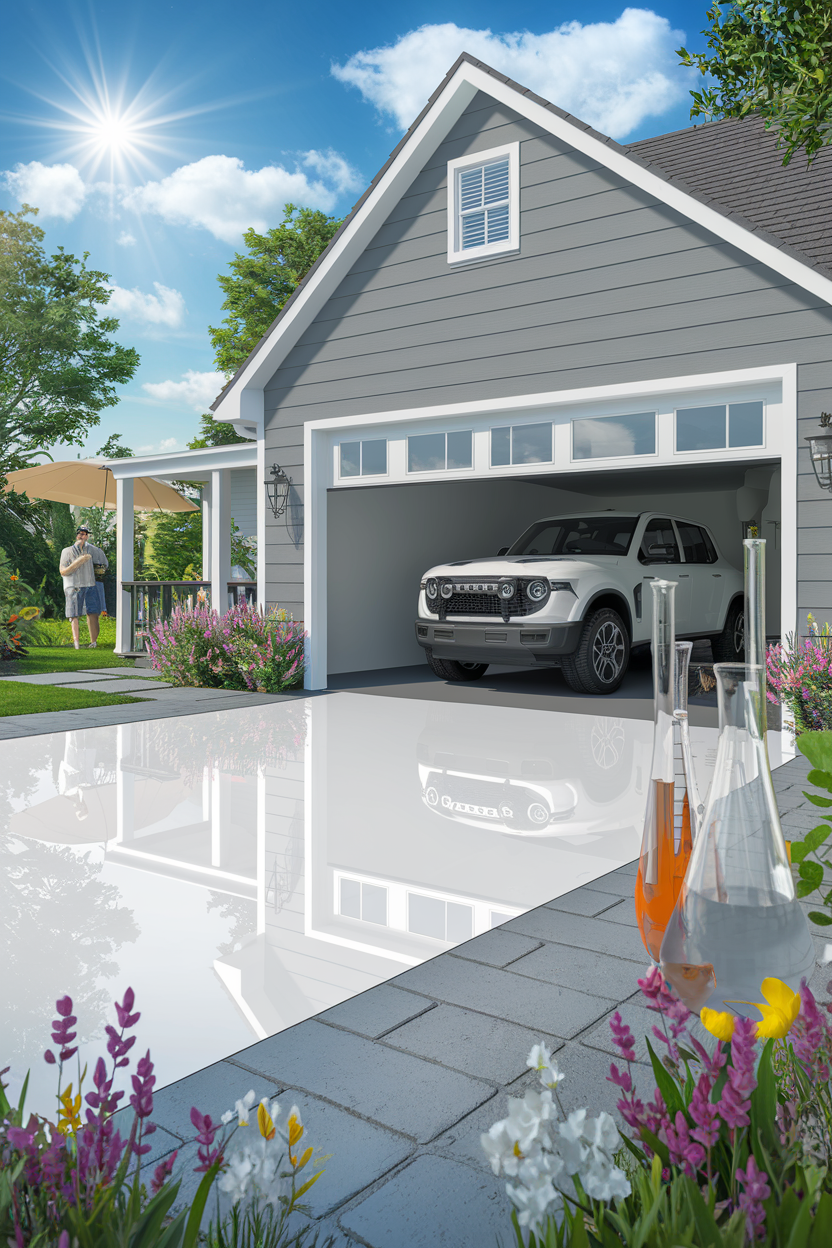
Polyurethane paint is a solvent-based garage floor coating known for its incredible toughness. You can use it alone as a primary coating or as a super-durable topcoat over an existing epoxy floor.
Why You Might Love a Polyurethane Garage Floor
Polyurethane is extremely durable, rivaled only by high-end epoxy systems. It is highly resistant to chemicals, abrasions, and impact.
Unlike epoxy, polyurethane is UV-resistant, meaning it will not fade or yellow when exposed to direct sunlight. This makes it ideal for garages where the door is often left open.
It dries into a beautiful high-gloss or satin finish that is built to last. Its superior flexibility also makes it more resistant to scratches and better at handling temperature fluctuations without cracking.
Why You Might Regret Choosing Polyurethane Paint
The preparation for polyurethane is just as intense as it is for epoxy. Failure to properly clean, repair, and dry the concrete will lead to coating failure and deep regret.
Like some epoxies, polyurethane has a limited pot life, so you have to work quickly. It also emits strong odors and VOCs during application, requiring excellent ventilation and personal protective equipment.
Polyurethane paint is generally more expensive than latex and some epoxy systems. It also takes several days to fully cure, meaning your garage will be out of commission while you wait.
How to Decide Which Paint is Right for Your Garage

Compare your situation to the scenarios here to help you decide which type of paint to use. As many garage experts advise, the right choice aligns with your budget, expected traffic, and desired appearance.
Choose Latex When… Budget and Speed are Top Priority
Choose latex paint for the easiest and fastest application. It requires a clean floor, but the prep is less intensive than with two-part coatings, and you don’t have to worry about “pot life.”
Choose latex if you need to use the garage floor as soon as possible. It dries in hours, not days. It’s also the best choice if you want to avoid strong fumes and VOCs.
Choose Epoxy When… You Have an Uneven Floor or Want Maximum Thickness
Choose epoxy for its self-leveling properties. It applies much thicker than other paints and can fill in minor imperfections and small cracks that polyurethane might not hide.
This thickness provides a heavy-duty layer of protection that offers excellent impact resistance. While still more expensive than latex, epoxy kits are often more affordable than high-end polyurethane systems.
Choose Polyurethane When… Durability Against Sun, Scratches, and Chemicals is Key
Choose polyurethane if your garage floor is exposed to direct afternoon sun. Its superior UV resistance means it won’t yellow over time like epoxy will.
Polyurethane is also more flexible, making it better for garages that experience major temperature swings. This flexibility also gives it superior scratch and abrasion resistance, perfect for a high-traffic workshop.
If your floor will be exposed to harsh chemicals like gasoline, solvents, or brake fluid, polyurethane is the clear winner for its unmatched chemical resistance.
A Quick Summary: Which Paint Is Best for You?

Latex garage floor paint is the easiest to use and the cheapest option available. However, it comes with limited durability and chemical resistance, making it best for low-traffic garages.
Epoxy coatings create a handsome, thick, and highly durable floor. They require a perfectly dry, clean, and properly prepared surface to ensure proper adhesion and avoid peeling.
Polyurethane is the ultimate protector for your garage floor. Both it and epoxy are resistant to many chemicals, but polyurethane is the strongest against harsh solvents, UV rays, and abrasions, making it the top choice for demanding environments.


